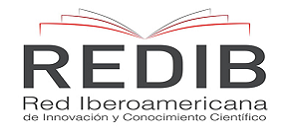Anthropometric study in the players of the Spanish Female Team of Roller Hockey
Keywords:
Roller hockey; Female athletes; Anthropometry; Sport sciences.Abstract
Objectives: The objectives of the present study were: a) to analyze anthropometric variables in female elite roller hockey players b) to compare the results with other sports with similar somatotype (ice hockey, field hockey).
Methods: A descriptive study was performed in 16 roller hockey players from the Spanish National Team (age range 16-30 years, mean age 21.8 ± 4.1), including anthropometric measures, body composition and somatotype. A literature review about roller hockey anthropometry was performed and other similar sports were also considered (field hockey and ice hockey).
Findings: The anthropometric results showed similar height and weight parameters in comparison to previous articles about female roller hockey players, showing also similarities with ice hockey players. In our sample, goalkeepers (n=3) and field players (n=13) showed no significant differences in anthropometric values.
Conclusions: The results of our study provide anthropometric reference values for elite roller hockey players.
Downloads
References
Real Federación Española de Patinaje [Internet]. Available from: www.fep.es [cited 15 May 2020].
Ramos-Angulo AB, Medina-Porqueres I, Ortiz-Bish A, Ruiz-Martínez Y, Medina-Jiménez L, Elena-Gamboa J. Perfil antropométrico de jugadoras de balonmano femenino de élite. Rev And Med Dep. 2018;11(2):47-51. http://dx.doi.org/10.1016/j.ramd.2016.09.002
Romero Martín E, de Pablo B, Garcia Almeida T. Anthropometry in elite roller hockey players. Atena J. Sports Sci. 2020;2(4):1-8.
Stephan H, Herzig ML, Hagedorn T, Wehmeier UF, Hilberg T. Overview of motor skills in female elite rink hockey players. Dtsch Z Sportmed. 2018;69(10):326-332. http://dx.doi.org/10.5960/dzsm.2018.346
Roces Vila I. Control de cargas de entrenamiento en Hockey Sobre Patines [dissertation]. León (Spain): Universidad de Leon; 2019.
Geither C, Lee A, Bracko M. Physical and performance differences among forwards, defensemen and goalies in elite women’s ice hockey. J Strength Cond Res. 2006;20(3):500-505. https://doi.org/10.1519/00124278-200608000-00007
International Society for the Advancement of Kinanthropometry. International standards for anthropometric assessment. Adelaide; 2001.
Alvero JR, Cabañas MD, Herrero A, Martinez L, Moreno C, Porta J, et al. Protocolo de valoración de la composición corporal para el reconocimiento médico deportivo. Documento de consenso del Grupo Español de Cineatropometría (GREC) de la Federación Española de Medicina del Deporte (FEMEDE). Arch. med. deporte. 2010;27(139):330-342.
Faulkner JA. Physiology of swimming and diving. In: Falls H. Exercise physiology. Baltimore: Academic Press, 1968.
Matiegka J. The testing of physical efficiency. Am. J. Phys. Anthropol. 1921;4(3):223-230. https://doi.org/10.1002/ajpa.1330040302
Carter JE. The Heath-Carter anthropometric somatotype. Instruction manual. San Diego, CA, USA: Departament of Exercise and Nutritional Science, San Diego State University; 2002.
Organización Mundial de la Salud [Internet]. El sobrepeso y la obesidad se definen como una acumulación anormal o excesiva de grasa que puede ser perjudicial para la salud [cited 30 Jun 2020]. Available from: https://www.who.int/features/factfiles/obesity/facts/es/
Pérez FJ, Bonafonte LF, Martínez RP, Cavallé MB. Perfil Antropomètric i funcional del jugador d'hoquei sobre patins. Apunts Med Esport. 1993;30(115):23-30.
Pons V, Riera J, Galilea PA, Drobnic F, Banquells M, Ruiz O. Caracteri?sticas antropome?tricas, composicio?n corporal y somatotipo por deportes. Datos de referencia del CAR de San Cugat, 1989-2013. Apunts Med Esport. 2015;50(186):65-72. https://doi.org/10.1016/j.apunts.2015.01.002
Calo C, Sanna S, Piras I, Pavan P, Vona G. Body composition of Italian female hockey players. Biol. Sport. 2009;26(1):23-31. https://doi.org/10.5604/20831862.890172
Downloads
Published
How to Cite
Issue
Section
License
Copyright and Licensing
For all articles published in Atena Journals, copyright is retained by the authors. Articles are licensed under an open access Creative Commons CC BY 4.0 license, meaning that anyone may download and read the paper for free. In addition, the article may be reused and quoted provided that the original published version is cited. These conditions allow for maximum use and exposure of the work, while ensuring that the authors receive proper credit.
Reproducing Published Material from other Publishers
It is absolutely essential that authors obtain permission to reproduce any published material (figures, schemes, tables or any extract of a text) which does not fall into the public domain, or for which they do not hold the copyright. Permission should be requested by the authors from the copyrightholder (usually the Publisher, please refer to the imprint of the individual publications to identify the copyrightholder).
Permission is required for:
- Your own works published by other Publishers and for which you did not retain copyright.
- Substantial extracts from anyones' works or a series of works.
- Use of Tables, Graphs, Charts, Schemes and Artworks if they are unaltered or slightly modified.
- Photographs for which you do not hold copyright.
Permission is not required for:
- Reconstruction of your own table with data already published elsewhere. Please notice that in this case you must cite the source of the data in the form of either "Data from..." or "Adapted from...".
- Reasonably short quotes are considered fair use and therefore do not require permission.
- Graphs, Charts, Schemes and Artworks that are completely redrawn by the authors and significantly changed beyond recognition do not require permission.
Obtaining Permission
In order to avoid unnecessary delays in the publication process, you should start obtaining permissions as early as possible. If in any doubt about the copyright, apply for permission. Atena Journals cannot publish material from other publications without permission.
The copyright holder may give you instructions on the form of acknowledgement to be followed; otherwise follow the style: "Reproduced with permission from [author], [book/journal title]; published by [publisher], [year].' at the end of the caption of the Table, Figure or Scheme.














